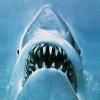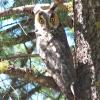Leaderboard
Popular Content
Showing content with the highest reputation on 10/29/2015 in all areas
-
There you go, calling other members stupid again. Can you make a post that doesn't involve insulting members with a different opinion than yours?3 points
-
Yes it's been done. I even gave a reference in my rebuttals above. There are more. Don't trust me, do some homework. If we need someone to lay it all out for us, it's not going to happen. The Murmann refrence was done testing bite patterns on polystyrene not scavenged bones. You didn't provide any formal rebuttal or publication that nullifies the conclusions of brights thesis regarding species identification based on scavenged bone bite marks. Her conclusions were that species identification on scavenged bones was not accurate. Based on her research scavenged bones should not be used to identify any species or taxa.2 points
-
http://bigfootforums.com/index.php/topic/50874-wellhmmmm-what-have-we-here/1 point
-
Hello DWA, (My bold and underline) Key word here is "postulate". You can define that word if you wish but I don't think it means proof in anybody's dictionary, eh? We can leave it at that unless you want to bash some more scientists, or insult some more members, which I've seen you do both of for over two years now. In light of that I STILL say investigating the area is an extremely important thing to do before ANY conclusions are arrived at. It's very critical to maintain a strong "beyond-a-shadow-of-a-doubt" mindset or tree-break reports can just go on the pile of unsupported "evidence" no matter how much one thinks T/B's say Sasquatch. There needs to be more- much more- at the scene to conclude that it was a Bigfoot. Bears climb trees which can break. Saying it's Sasquatch simply because it's broken is pie in the sky, my friend, no matter what. One needs to be sensible about such things. IOW.......THINK! Look at the area and look at the tree above and below the break for evidence supporting a Sasquatch doing the damage. Can't stress that enough.....you wanna talk science? THAT"S science.1 point
-
Lisa’s Interpretation of the Evidence 1. Bone stacking technique: Just because the Department of Fish and Game said an animal didn’t pile the bones does not mean that it is otherworldly. Not only do the bones appear to be at the bottom of a slope (and we all know things roll down hill), but it’s also possible that other humans may have picked up and moved the bones, just like the authors did when they encountered them. Rebuttal: The word otherworldly shows where her mindset is with respect to bigfoot. The biologist merely said that it looked like something humans would do, as opposed to the usual suspects. The thought of rib bones rolling down a hill and ending up in a pile points back to lack of experience. BP#1 was between a couple logs and not rolling anywhere. EK#1 was on a flat beside a stump next to a spring. No hills close by. EK#2, the kill was actually in the bottom of a small gully and the stack was up on a flat beside it. Talk about otherworldly; that defies gravity. 2. Skeletal evidence: Ribs are difficult bones to take tooth impact measurements on because of their complex shape, and their delicate nature. Ribs and vertebrae are prone to easy fracturing and distortion when being chewed on. Rebuttal: Actually it was very easy to measure the impressions in the ribs. We did note where there might have been some deflection on the bite through. But all that would do is make the impression smaller than the tooth that made it. From what I can tell from this statement, she has never found impressions like this in a bone. Elk vertebrae are large and stout. Not much flexing going on there. What this boils down to is an excuse on her part. 3. Bigfoot’s teeth: Incisors typically don’t leave impressions on bone, aside from small scrapes and furrows. Large pits and punctures are typically created by canine teeth. Rebuttal: Very true. She hit the nail on the head here. This is the case for the order Carnivora, which I discovered early on in our comparison research. Carnivore incisor teeth are built for nibbling, are very small, and don’t even come close to matching these impressions. Carnivore incisor impressions can be seen in the meat on our control specimen. Their canines tend to get in the way and do leave very distinct impressions if they do contact the bone. This is the point where she shows her lack of knowledge in dental forensics. The impressions that canine teeth leave in bone is distinct and measurable. Research has been done in this field, Murmann, et al. 2006. 4. Bite marks: The authors are trying to take bite mark analysis and dental arcade reconstructions typically used on flesh or soft material, and translating it to bone. That just does not work. Rebuttal: Really don’t have too much to say to this statement. It just shows her lack of familiarity with dental forensic research, with respect to predators and archeological research done on bone with respect to primitive cultures. 5. Tooth impact marks: When animal scavenge its possible for a single individual to leave a range of tooth impact marks dependent on the depth, pressure, and angle at which they are chewing. They specifically cite a public presentation Lisa gave during the beginning of her thesis research (Bright 2010), where she did talk about the potential ability to infer scavenger activity based on disarticulation sequence, scavenger behavior, and tried to look at tooth impression marks. However, her research concluded that it wasn’t possible to identify the scavenger to species, or potentially even taxa, based only on the tooth impact marks. She had remains that she watched bears scavenge, that did not match the typical tooth impact marks proposed by the literature. The final results are available in her thesis (2011 – articles forthcoming). Rebuttal: She mentions disarticulation sequence as being important just as we believe it is in our research. But she doesn’t go into it here. In this case I need to discuss why Mr. Townsend decided to use her research as a reference. Unless it was her lack of dental forensic evidence with respect to bears and was used as a counterpoint in our discussion. Because we did find measurable evidence. 6. Timing: The bones are highly weathered and sun bleached.Taphonomy is more than just scavenging; it’s anything that happens to the remains after death including movement by gravity or water, human intervention, natural decomposition, etc. At the low end, it’s likely that the bones have been there a minimum of six months, probably more. Rebuttal: Since all she saw were pictures I can understand her conclusion here. However, all the bone sites were in very shaded areas with little sun exposure. We used other means to determine the age of the bones. All mentioned in the paper. One thing for certain was that EK#1 and EK#2 had not over wintered or even been exposed to extended periods of rain. A look at our control specimen and what happens to flesh after much rain reveals this. Again, it may be lack experience but fresh bone is white. Once sun bleaching and weathering occurs the bone becomes pitted and hair line fractured. Conclusion In Lisa’s opinion, the damage to the elk and deer remains has a much more logical explanation than Bigfoot. She have not seen the bones, but based on the pictures provided in the reports, she argues that it is most likely bear or coyote scavenging. Although tooth impact analysis may sometimes work to determine the general characteristics of a possible scavenger, her experience with it indicated that method is questionable. There’s a lot of variation that can occur when a tooth impacts bone, especially on ribs. Taphonomy is also more than just animal activity. It involves considering the intrinsic and extrinsic properties of bone, length of outdoor exposure, weather patterns, decomposition timing, and a slew of other variables. All of these things need to be considered together when scavenged bones are analyzed. Rebuttal to Conclusion: This also goes back to her first comments. Yes we did see evidence of more than one individual at one site. The other sites were miles apart and only showed evidence of one individual. Since in her own work she was not able to identify what the predator or scavenger was, even though she knew it to be bears. Since it was ambiguous by her own admission. Can what she found be compared to our findings? Her research was included in our paper to compare bear scavenging to what we found. There are whole tables showing inter-canine distances for almost all the large predators. We were able to identify two other smaller scavengers in our research by their canine sizes, so yes it can be done. To say or infer that we didn’t try to place the age of each kill is definitely a stretch. That list of what to use is 100% correct and yes we did cover it in the papers. However, I will say that she hasn’t seen the bones and has admitted to such.1 point
-
1 point
-
Actually, the break only shows that it is broken.1 point
-
Why because you don't like the way I think and look at things? Because I don't fit into your idea of how a PhD would look at things? Which is one big reason why no progress is ever made in regards to BF research. The only progress that will ever be made is if someone like Norse or fararcher brings in a body, or I continue in my research and shake up the scientific community enough to take an honest look at the subject.1 point
This leaderboard is set to New York/GMT-05:00






